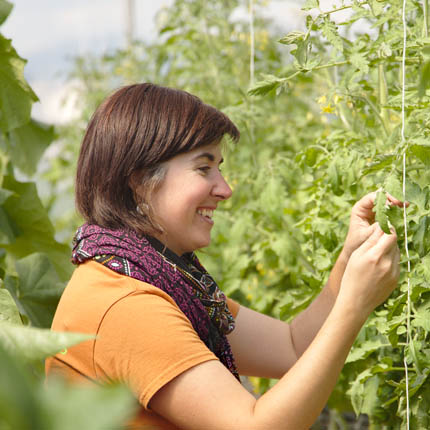Flowering Your Vegetable Garden: Good for Biodiversity and Your Well-Being
BY
EMILIE VANASSE-MONETTE
JUNE 11, 2024
COMMENTS 0
Flowers have long been used in the vegetable garden for a variety of reasons. The famous marigold that our grandmothers used to keep unwanted insects away, chamomile that makes delicious, relaxing herbal teas, and the many other interesting
edible flowers to grow. In the design of projects created by the Urbainculteurs team, flowers are used to encourage pollinators in the urban environment, as well as adding aesthetic appeal to the landscaping. Personally, I like to play with the colors and textures of foliage, adding sultry cosmos in bright orange alongside mauve kale, or letting dill bloom to admire its magnificent yellow umbels floating in the wind.

Dill in flower is very pretty. Photo: AlexeyKonovalenko
Then I made a wonderful discovery: several small-scale flower farms have sprung up in recent years, and they’ve really inspired me. And at the same time, why not make it a good reason to take care of yourself? The idea of integrating flowers in greater quantities into my vegetable garden has given me a wonderful experience that I wanted to share with you. And who knows, maybe even inspire you to grow your own flowers to pick all season long!
Positive Effects
As mentioned above, flowers are important allies in attracting and feeding pollinators, as well as supporting the production of your fruit and vegetables. They also provide shelter for beneficial insects, which act as natural predators to help you control insect pests in your garden.
I’ve been growing part of my vegetable garden in a greenhouse for several years. So, over time, I’ve resorted to buying certain auxiliary insects to help me against aphid infestations, for example. One of these insects is the green lacewing (
Chrysoperla carnea), a native insect that, over time, appeared quite naturally, thanks to the arugula and dill that I let bloom! I was thus able to create a habitat for this important ally. The adults feed on pollen and honeydew, while the larvae are real little soldiers, devouring aphids, mealybugs and unwanted mites.
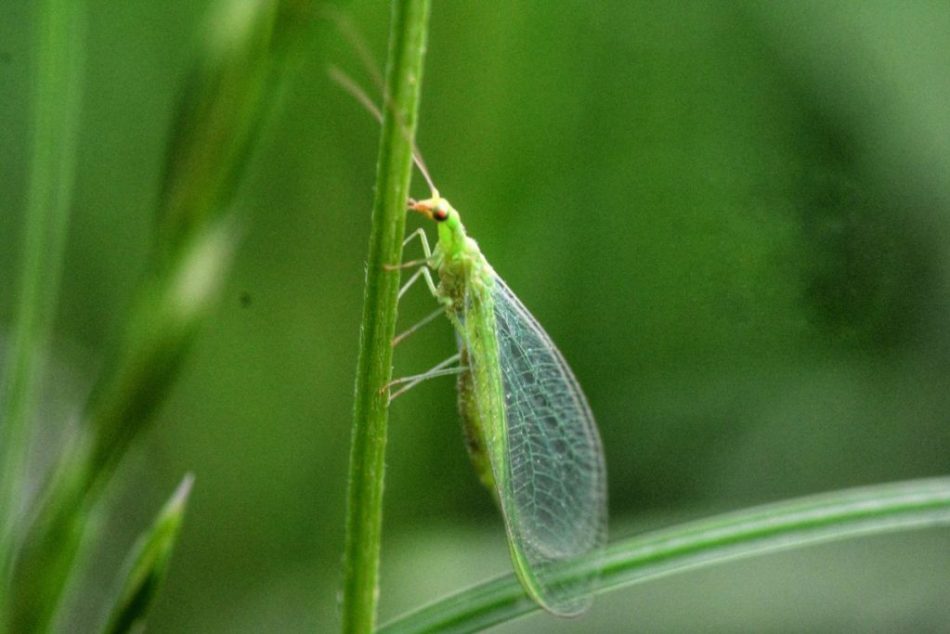
The green lacewing(
Chrysoperla carnea). Photo: Ines Carrara
Of course, we mustn’t forget one of the positive effects which, for me, has been a real revelation: the pleasure of contemplating magnificent flowers all season long, as you go about harvesting your vegetables and picking beautiful bouquets that will embellish your home, or your neighbor’s, why not? What a colorful way to spoil yourself every day!
Some Easy-to-Grow Cut Flowers
Here are three interesting and easy-to-grow flowers to get you started in the world of cut flowers. These three choices were part of my first tests last year, which were a success.
Garden Cosmos (Cosmos bipinnatus)
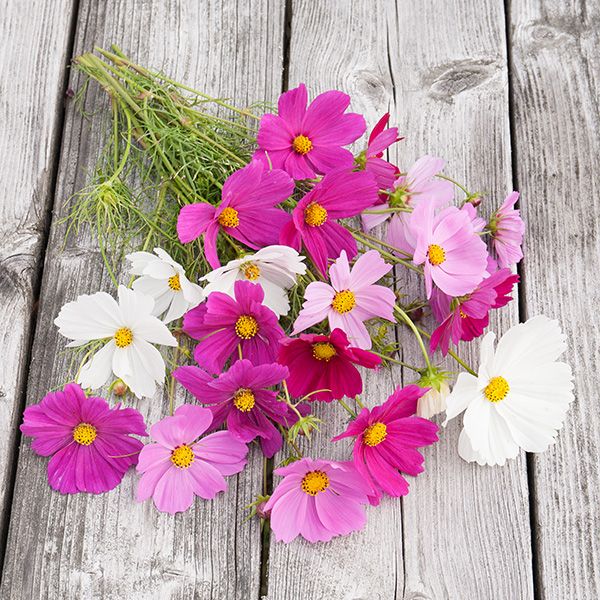
Source:
Les Urbainculteurs
Cosmos is an annual flower with highly dissected foliage and delicate blooms that bring a lightness to bouquets. You can easily grow it in ordinary or even poor soil. Soil that is too rich will stimulate the foliage and delay flowering. For abundant flowering from July until the first frost, pinch back the foliage when the plant is 15 cm (6″) tall, and prune back spent flowers regularly. Cosmos come in different shades of pink, red and white, and can have single or double petals, depending on the variety. You’ll even find them in shades of orange-yellow (
Cosmos sulphureus), recognized as a nectariferous plant much appreciated by pollinators. Sow them indoors in early May, or directly in the garden once the risk of frost has passed.
Zinnia (Zinnia elegans)
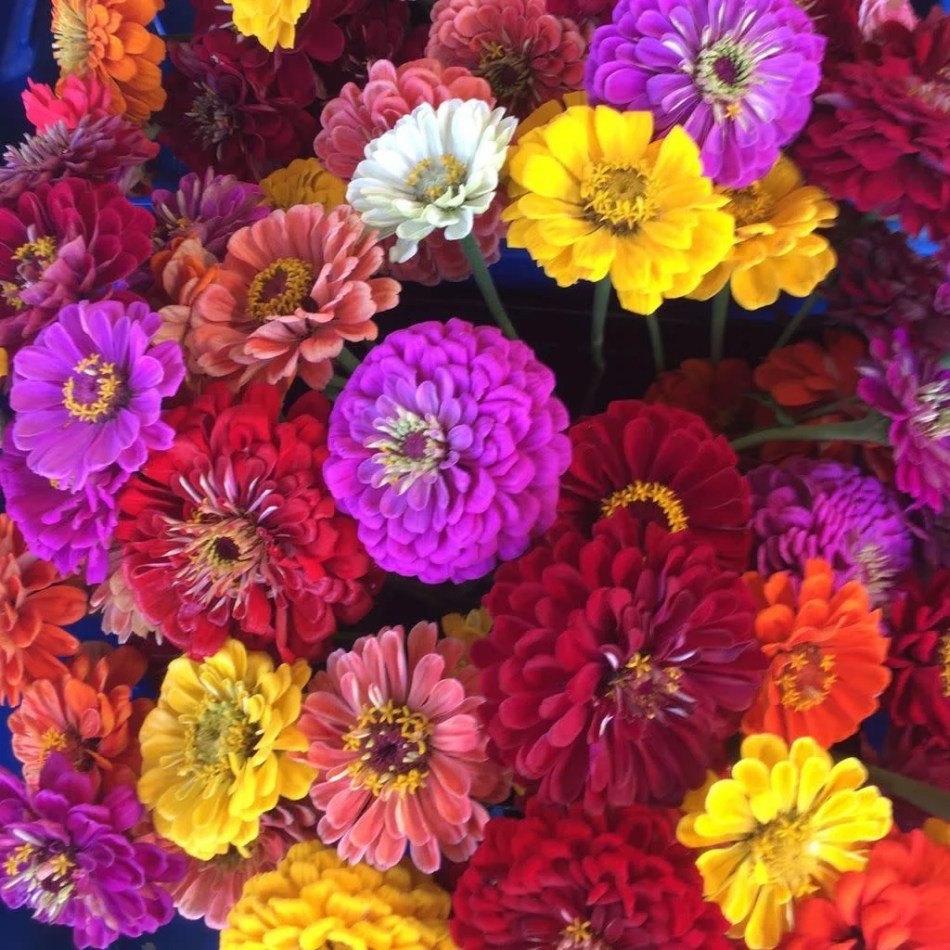
Source:
Les Urbainculteurs
There’s a wide range of varieties for this incredible annual flower. Very easy to grow, zinnias last a long time in the bouquet, and attract many insects, including butterflies, which love them. To get you started, I suggest California giant zinnias in mixes, which will steal the show in your vegetable garden! Plants can reach up to 1.20 m (4’) and produce large, double flowers 10 to 15 cm (3-4 ») long in shades of yellow, pink, red, fuchsia and orange. Like cosmos, they can be sown indoors from early May, or directly in the garden once the risk of frost has passed.
Strawflower (Helichrysum bracteatum)
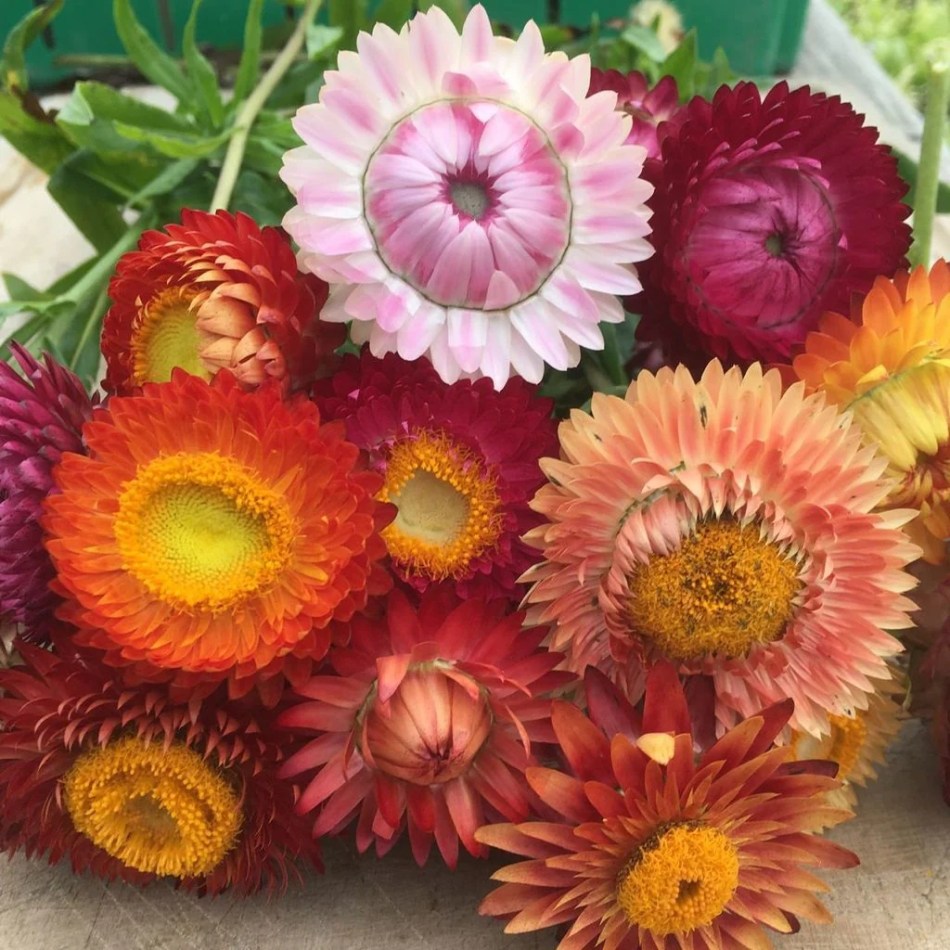
Source:
Les Urbainculteurs
Strawflower is a hardy annual with almost eternal flowers. The flowers, which also come in shades of red, yellow, white, pink and orange, never fade, hence the name. They’re perfect for making dried flower bouquets or other winter decorations for your home! The plants are very drought-tolerant, flowering from July to October and surviving a light frost. You can sow them indoors 6 weeks before the last spring frost.
Integrating Edibles Into Bouquets
In addition to the beautiful flowers and the positive effects they bring, you can easily complement your floral arrangements with elements already present in your vegetable garden. Consider incorporating certain herbs into your bouquets, such as purple basil, parsley, chive flowers and even leaves. You could even use a leaf or two of kale and the leaves of Swiss chard. Let your imagination run wild to create combinations that will be beautiful and surprising!

Bouquet de Zinnias et de Cosmos. Photo: Redheadedhornet
As for me, I was completely charmed by my experience, and I’m doing it again this summer with several new additions to give my vegetable garden even more color. I think the easiest way to start is with easy choices that allow you to learn and gain confidence. For those of you who prefer to enjoy all these beauties without necessarily growing them, you can encourage a flower farm near you. This passion is so contagious that my colleague Vicki (project manager at
Jardins du bassin Louise) decided to make it a project this year. In some of the urban farm’s planters, beautiful flowers will grow to offer bouquets of flowers for solidarity, another great way to treat yourself and support our organization.
We hope all this inspires you to add a few flowers to your garden!
https://laidbackgardener.blog/2024/...en-good-for-biodiversity-and-your-well-being/



















































